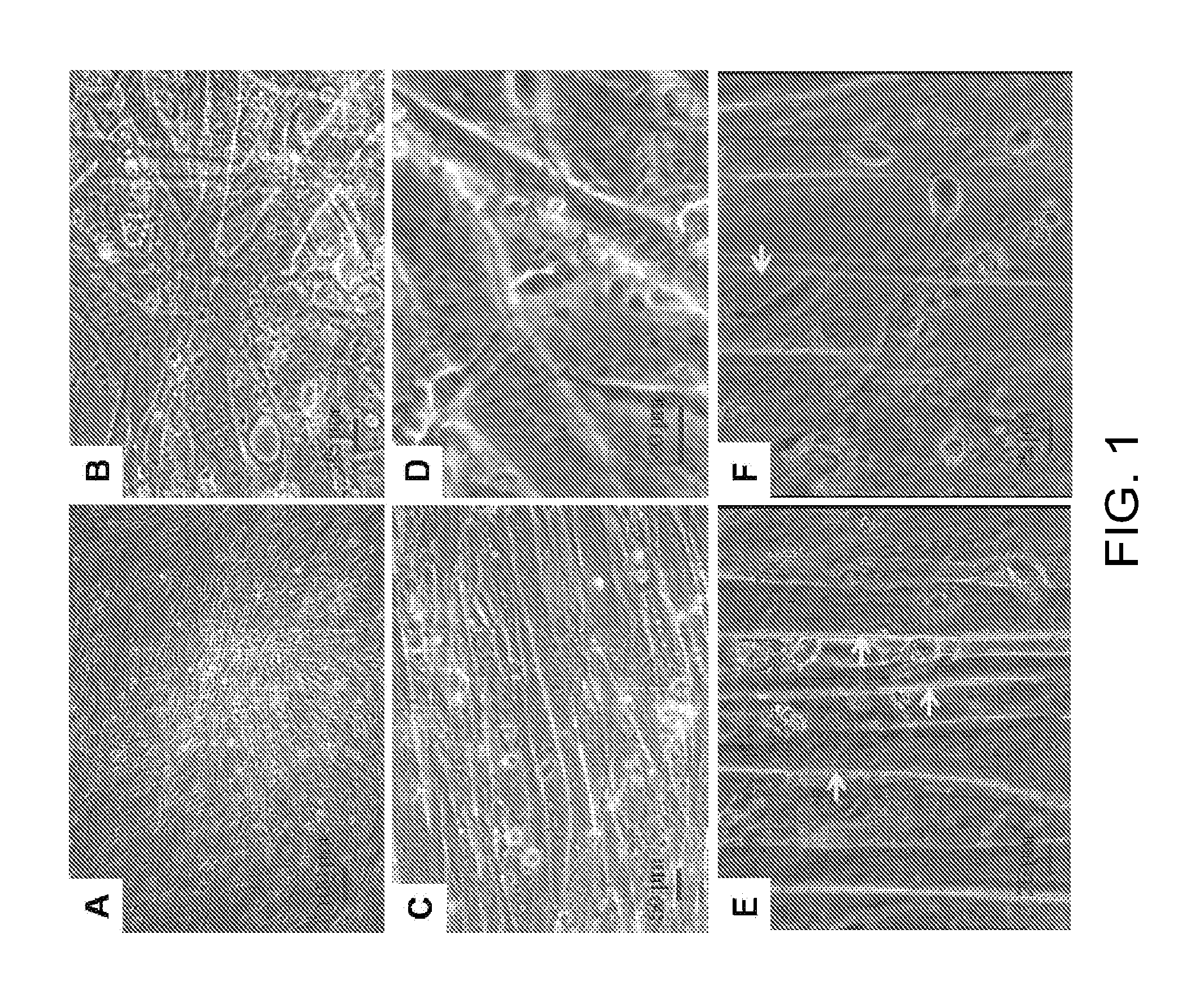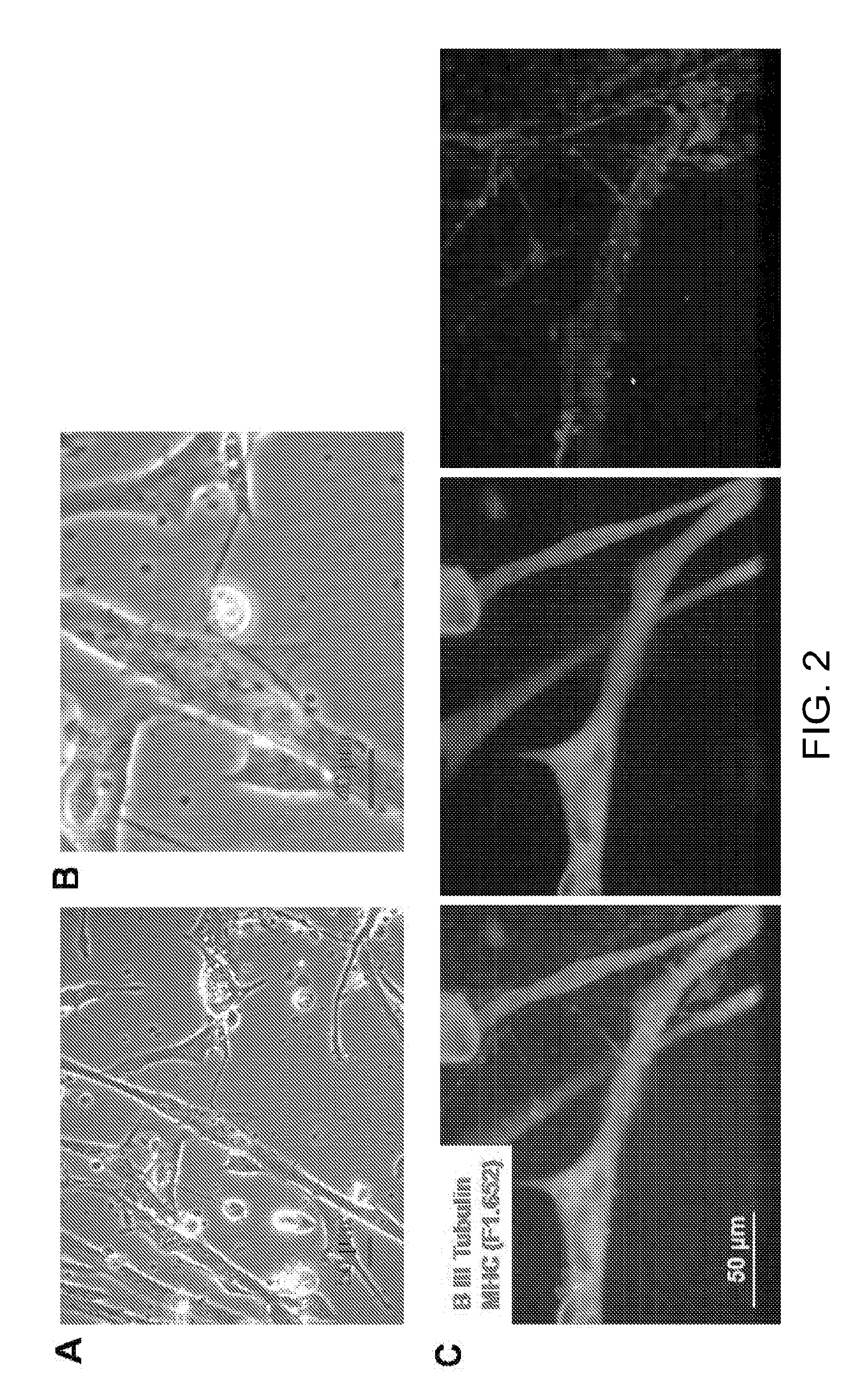Formation of neuromuscular junctions in a defined system
a neuromuscular junction and defined system technology, applied in the field of cell culture, can solve the problems of fewer drugs being approved, impeded by current techniques for producing nmjs, and less drug approvals
- Summary
- Abstract
- Description
- Claims
- Application Information
AI Technical Summary
Benefits of technology
Problems solved by technology
Method used
Image
Examples
working examples
DETA Surface Modification
[0034]Glass coverslips (6661F52, 22×22 mm No. 1; Thomas Scientific, Swedesboro, N.J., USA) were cleaned using HCl / methanol (1:1) for at least 2 hours, rinsed with water, soaked in concentrated H2SO4 for at least 2 hours and rinsed with water. Coverslips were boiled in nanopure water and then oven dried. The trimethoxysilylpropyldiethylenetri-amine (DETA, T2910KG; United Chemical Technologies Inc., Bristol, Pa., USA) film was formed by the reaction of cleaned surfaces with a 0.1% (v / v) mixture of the organosilane in freshly distilled toluene (T2904; Fisher, Suwanne, Ga., USA). The DETA coated coverslips were heated to ˜80° C., then cooled to room temperature (RT), rinsed with toluene, reheated to approximately the same temperature, and then cured for at least 2 hours at 110 C. Surfaces were characterized by contact angle and X-ray photoelectron 5 spectroscopy as described previously (26, 42, 43).
Co-Culture of Human MNs and Human Skeletal Muscle Stem Cells
[003...
PUM
| Property | Measurement | Unit |
|---|---|---|
| temperature | aaaaa | aaaaa |
| temperature | aaaaa | aaaaa |
| Current | aaaaa | aaaaa |
Abstract
Description
Claims
Application Information
 Login to View More
Login to View More - R&D
- Intellectual Property
- Life Sciences
- Materials
- Tech Scout
- Unparalleled Data Quality
- Higher Quality Content
- 60% Fewer Hallucinations
Browse by: Latest US Patents, China's latest patents, Technical Efficacy Thesaurus, Application Domain, Technology Topic, Popular Technical Reports.
© 2025 PatSnap. All rights reserved.Legal|Privacy policy|Modern Slavery Act Transparency Statement|Sitemap|About US| Contact US: help@patsnap.com



